The Butcher (version 2) 1990
Mutants (a sketch), 1973
The Butcher, 1990
Mutants (a sketch) version 2, 1973
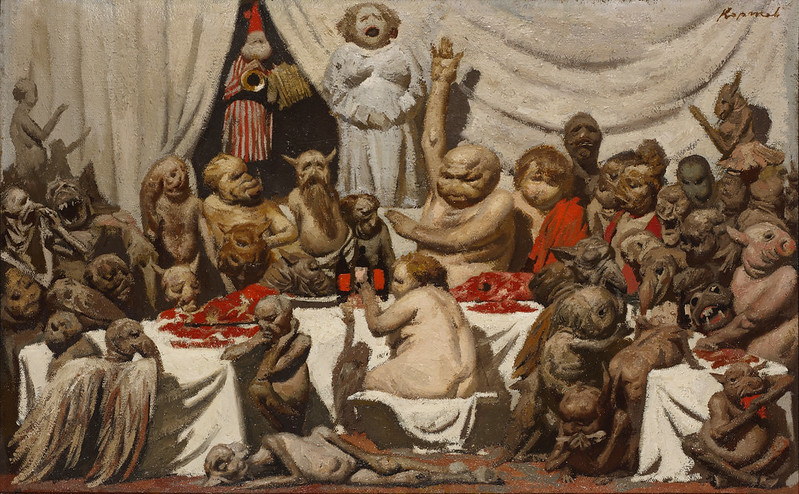
Feast, 1987
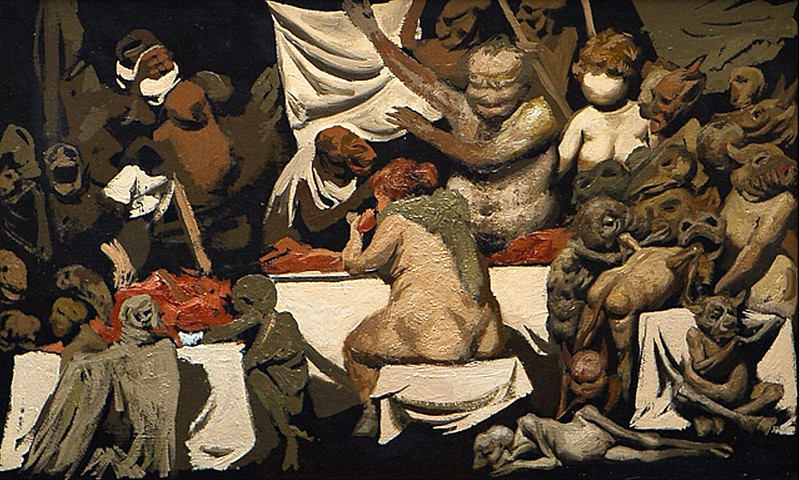
The Table, 1986

Feast, 1988
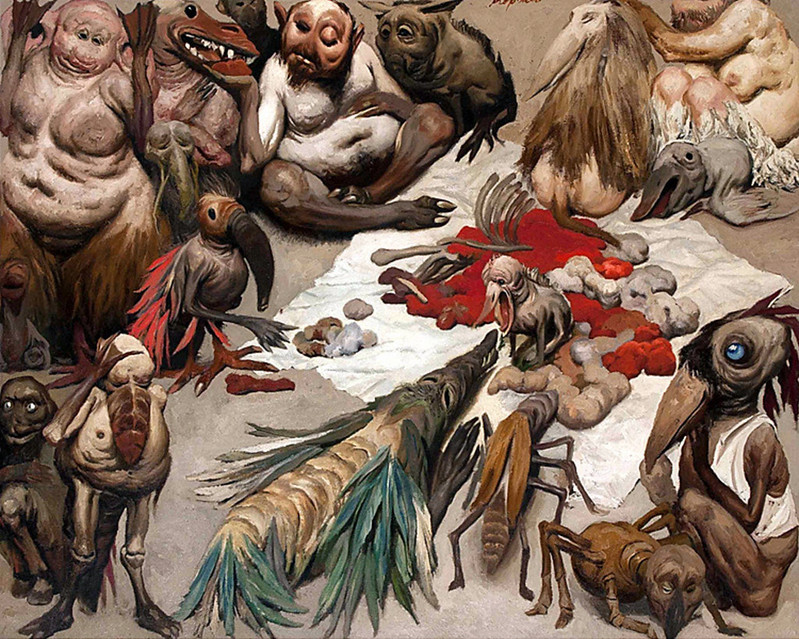
Feast, 1983
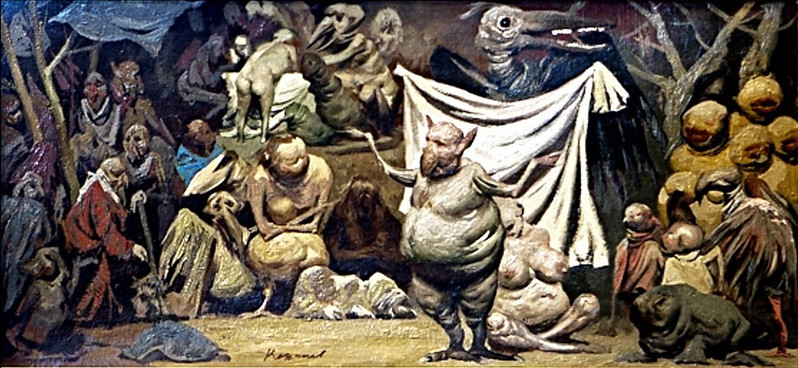
Triumpher, 1992
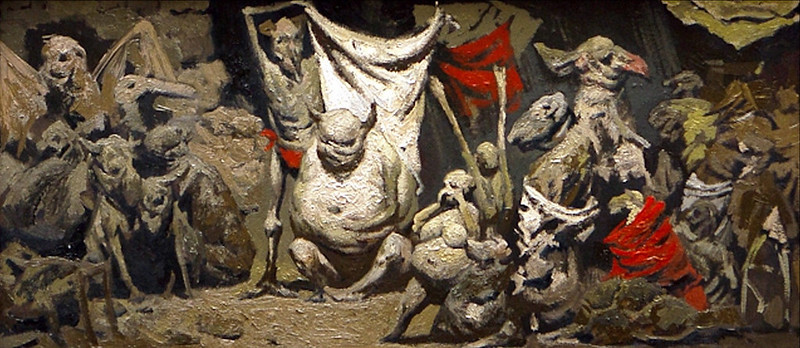
Rally, 1987
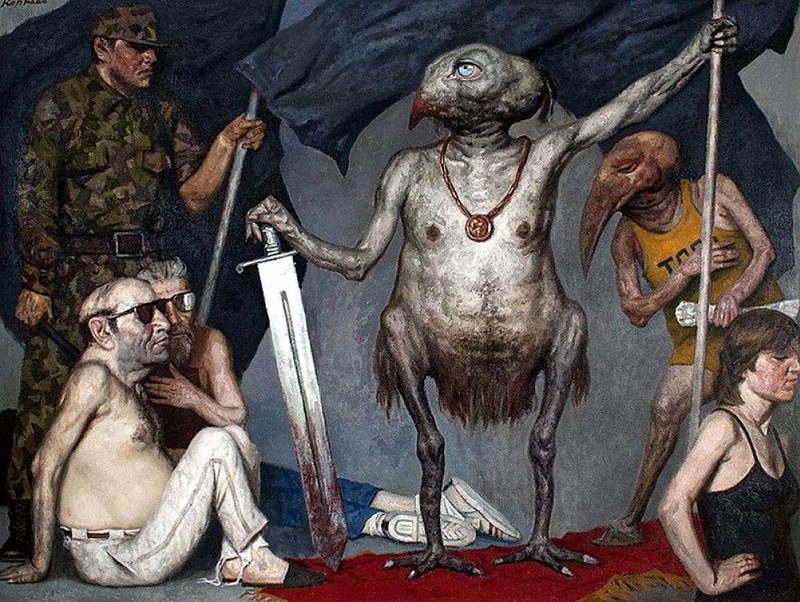
Triumfator, 1996
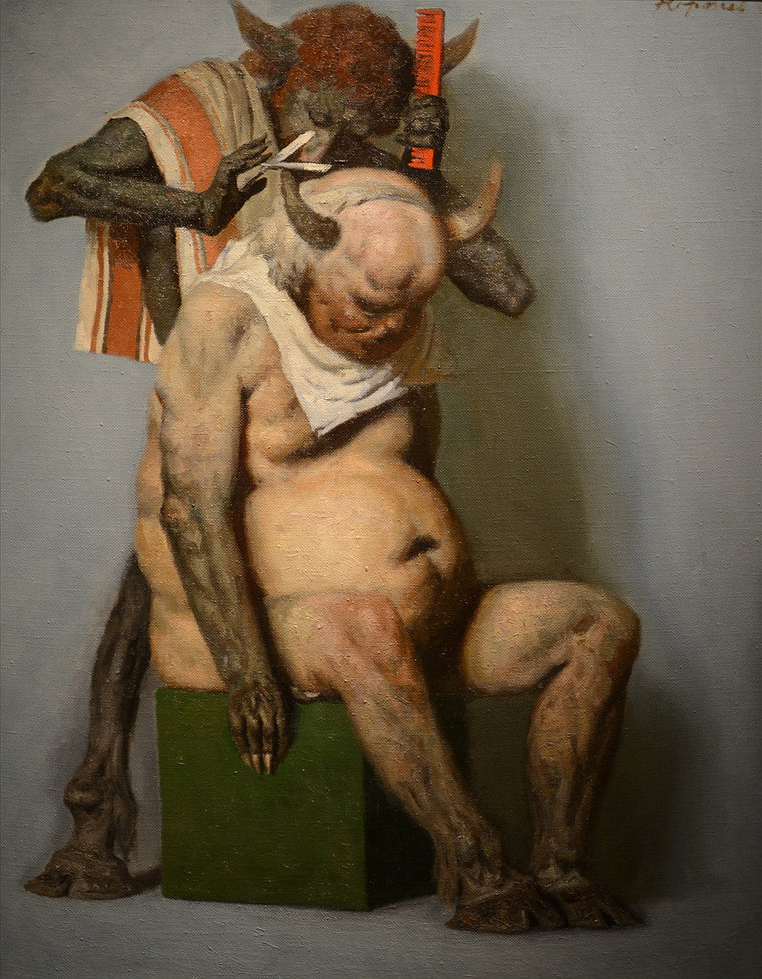
At the Hairdressers; Tyurliki #3, 1991
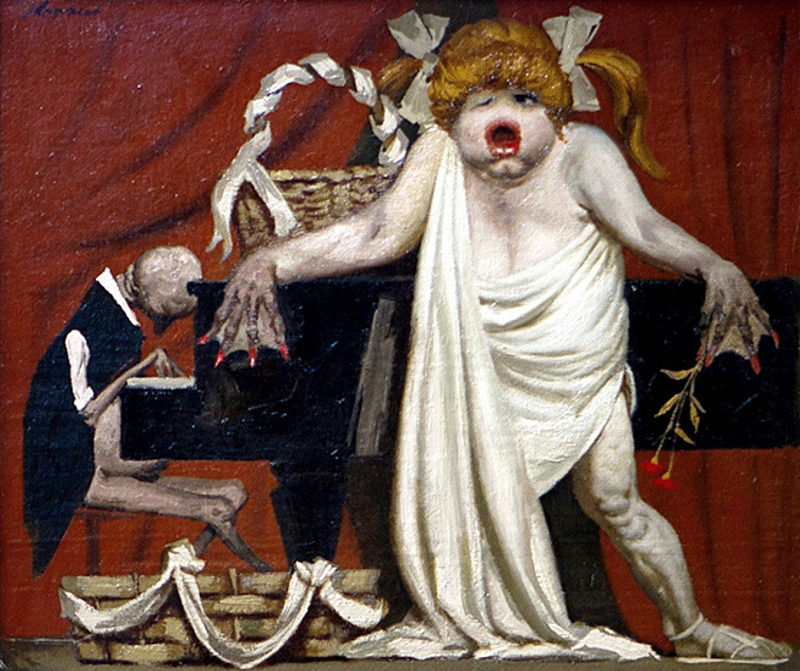
Blue Light, 1976
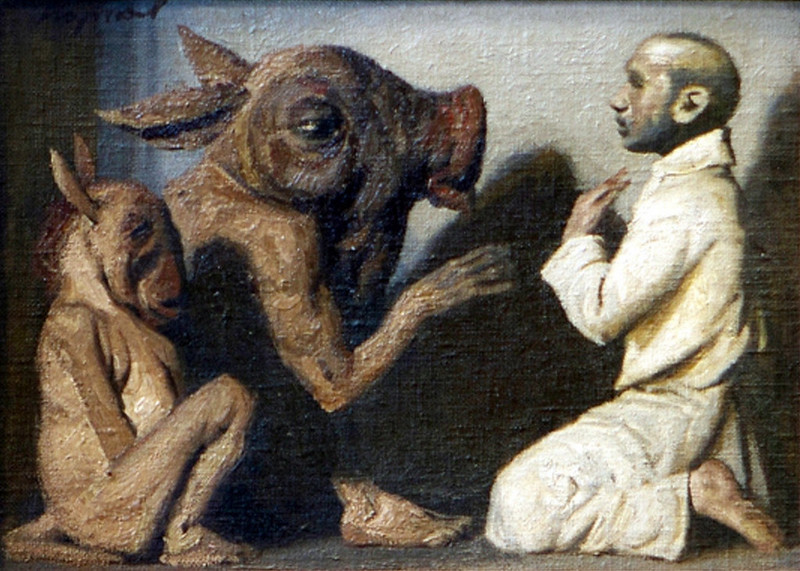
Dispute 2, 1991
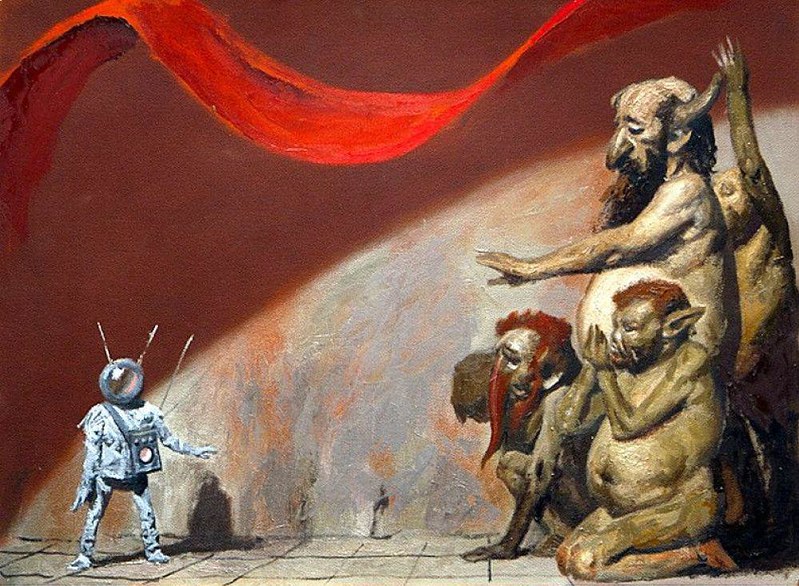
Tyurlikov And Alien, 1981
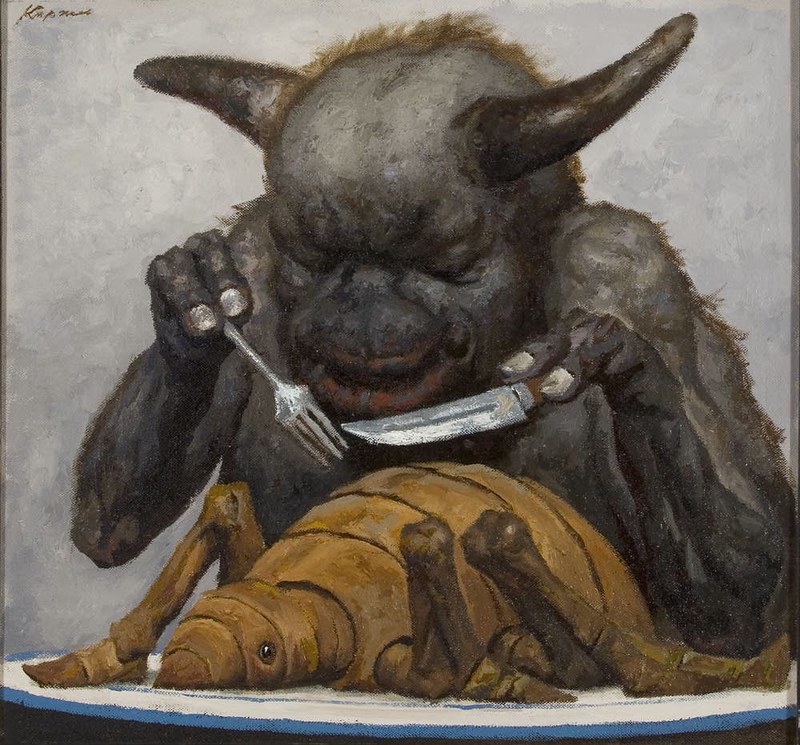
Belly God, 1990
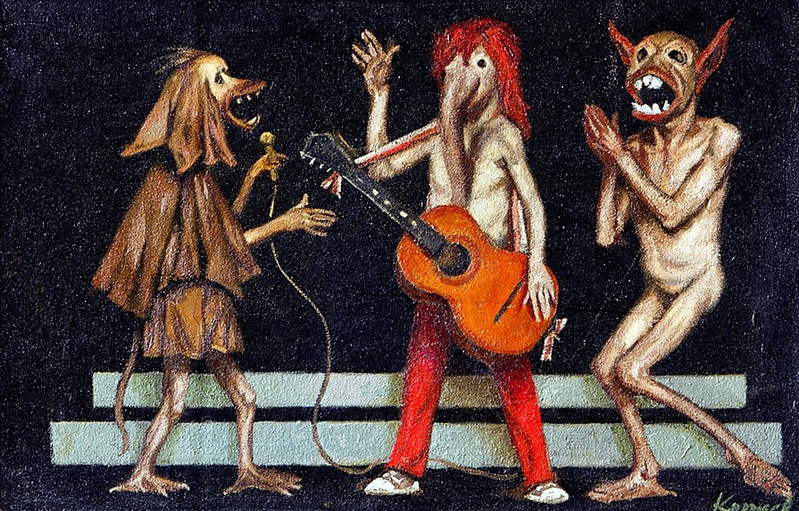
Stage, 1980
"With the demise of the Soviet Union, Korzhev’s subject range expanded to include a series on a Russianized Don Quixote and some Biblical events. But his politics did not change. He worked on his “Judas” during the period that ended the Soviet regime and brought on Boris Yeltsin, and in the commentary he compares the Biblical figure to the Socialist state that has “figuratively hung and killed itself.”
Images found at Mutual Art, Vladey Auctions, istina.russian-albion.com,
More paintings from Geli Korzhev can be viewed here.

Feast, 1987

The Table, 1986

Feast, 1988

Feast, 1983

Triumpher, 1992

Rally, 1987

Triumfator, 1996

At the Hairdressers; Tyurliki #3, 1991

Blue Light, 1976

Dispute 2, 1991

Tyurlikov And Alien, 1981

Belly God, 1990

Stage, 1980
"With the demise of the Soviet Union, Korzhev’s subject range expanded to include a series on a Russianized Don Quixote and some Biblical events. But his politics did not change. He worked on his “Judas” during the period that ended the Soviet regime and brought on Boris Yeltsin, and in the commentary he compares the Biblical figure to the Socialist state that has “figuratively hung and killed itself.”
Judas is depicted frontally, hanging full-figure,
except his head is outside the frame. One sandal has dropped onto
a towel, where pieces of silver still lay scattered. The other sandal
remains on his foot. You can almost smell the leather, just as you
can in an earlier painting entitled “No Name.” There,
a bearded Russian in a sleeveless T-shirt is kneeling, his wrists
bound tightly with a worn belt. A tightlipped soldier, swastika
on his armband and rifle slung over his shoulder, is tying on a
blindfold.
Some of Korzhev’s more recent work—the
“Tyurlikis” series—is reminiscent of Hieronymus
Bosch, the 15th century Dutch Christian painter whose demons and
strange half-human creatures with their tin hats make Salvador Dali
look a bit thin. Some Tyurliki paintings are, according to Korzhev’s
commentary, allegories expressing his contempt for post-Soviet corruption.
Others are more enigmatic. “Fight” depicts a fight or
sexual intercourse, it’s hard to tell which, between a human
viewed from the back and a bat-gargoyle figure that has sunk its
teeth into the man’s shoulder. Others are hilarious, in their
way." - quote source
More paintings from Geli Korzhev can be viewed here.

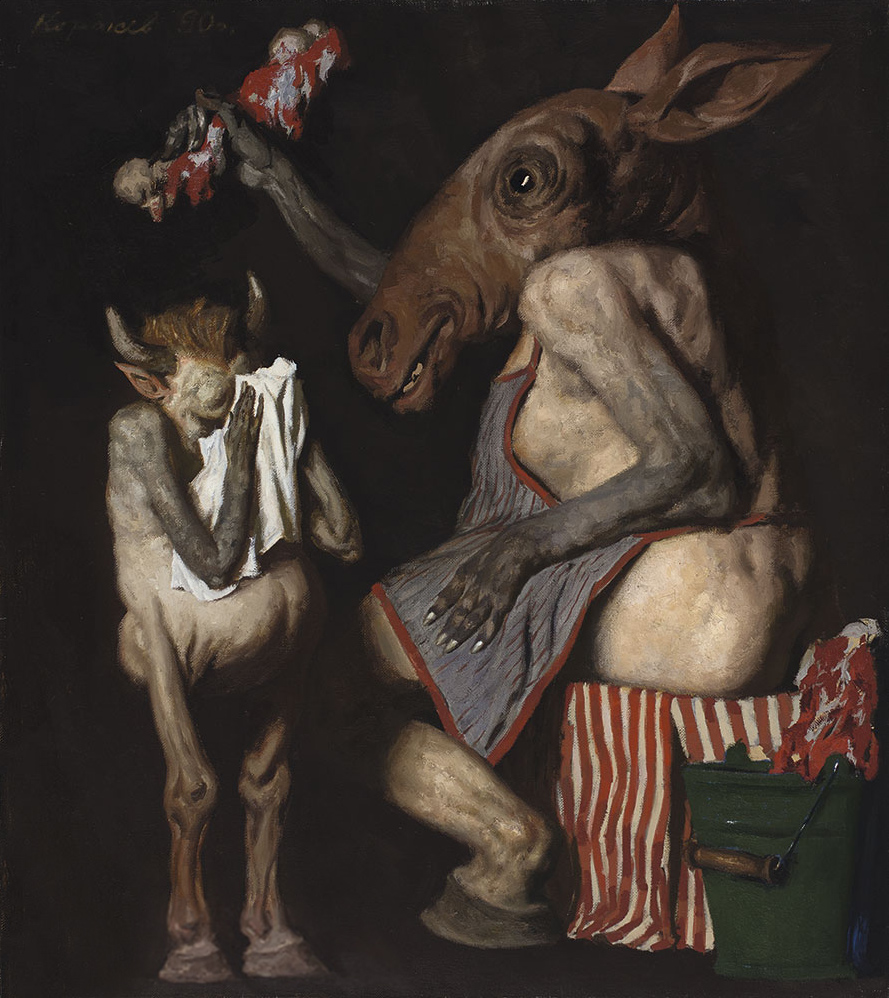
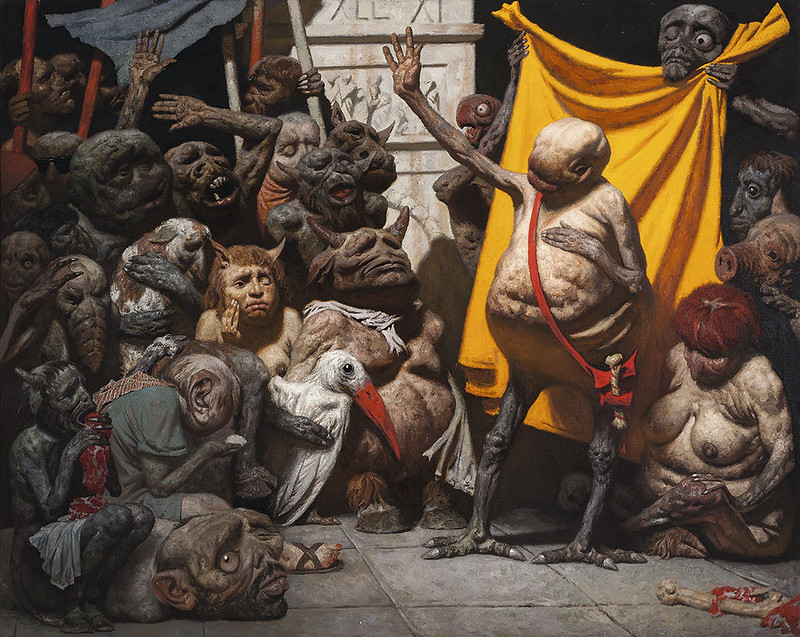
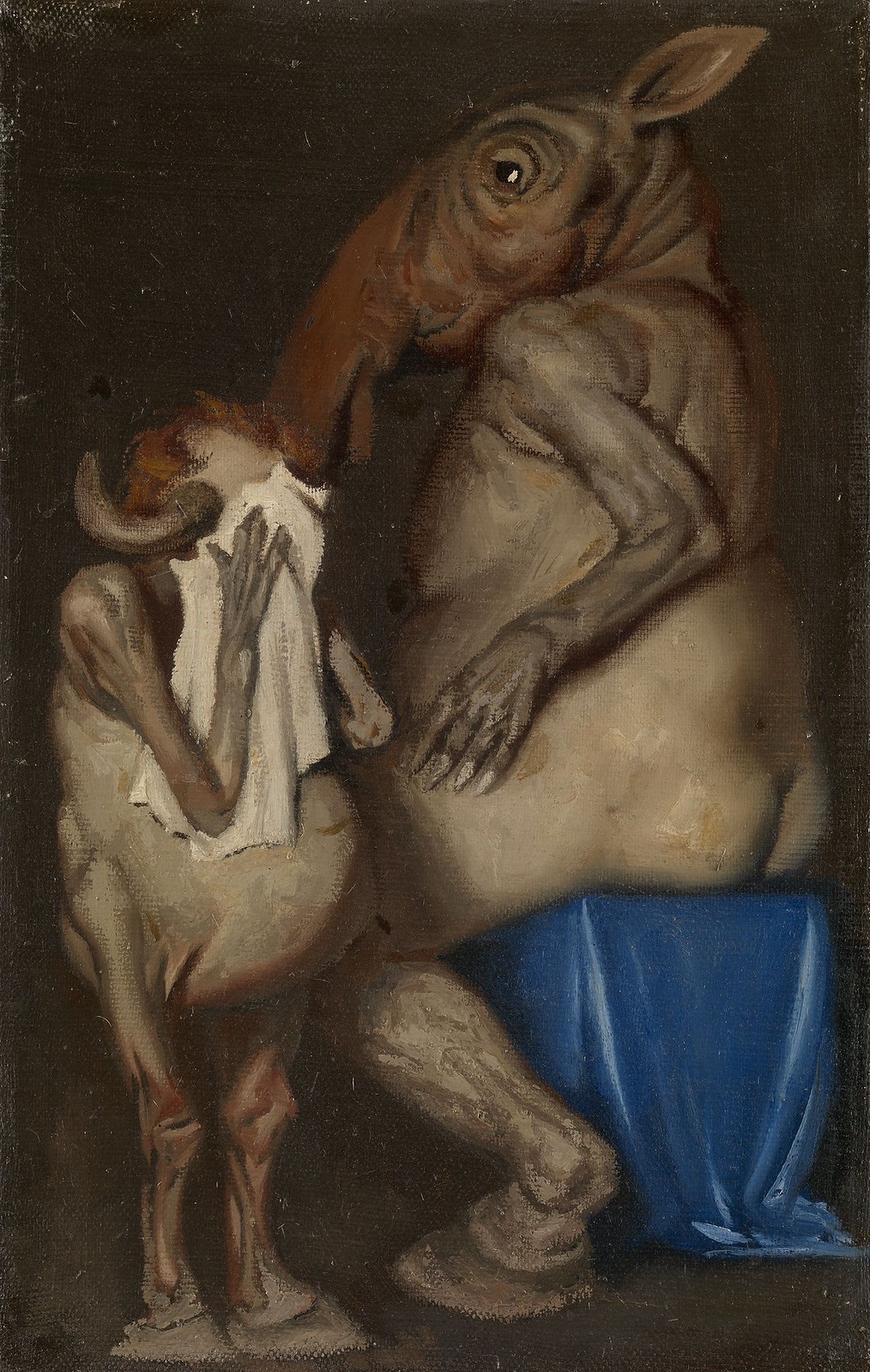
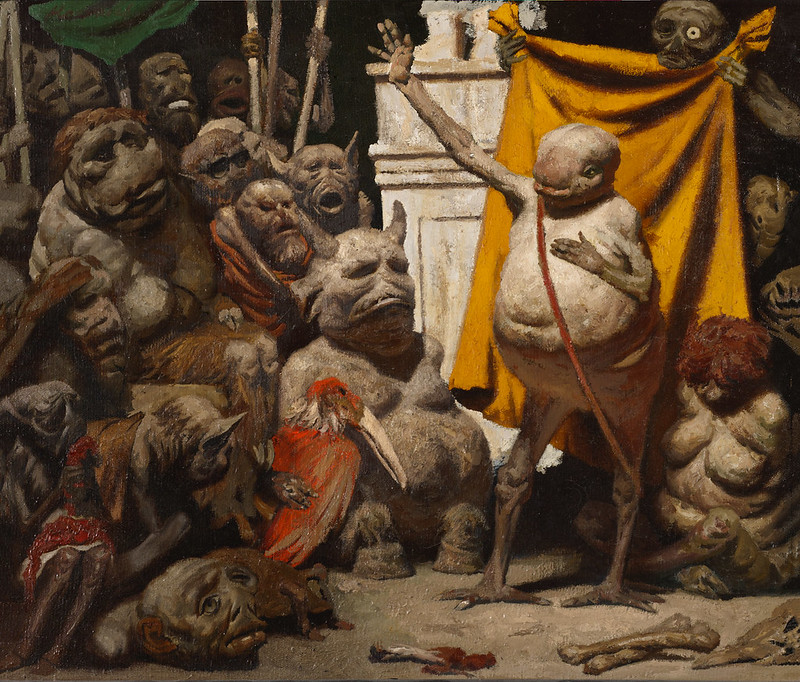
1 comment:
It's pretty interesting to see this artist's work because just for this brief period in his career he decided to paint these monsters. If I'm not mistaken it was because his granddaughter or someone in his family asked him to. I have his book that I bought from the Russian Museum in Minneapolis.
Post a Comment